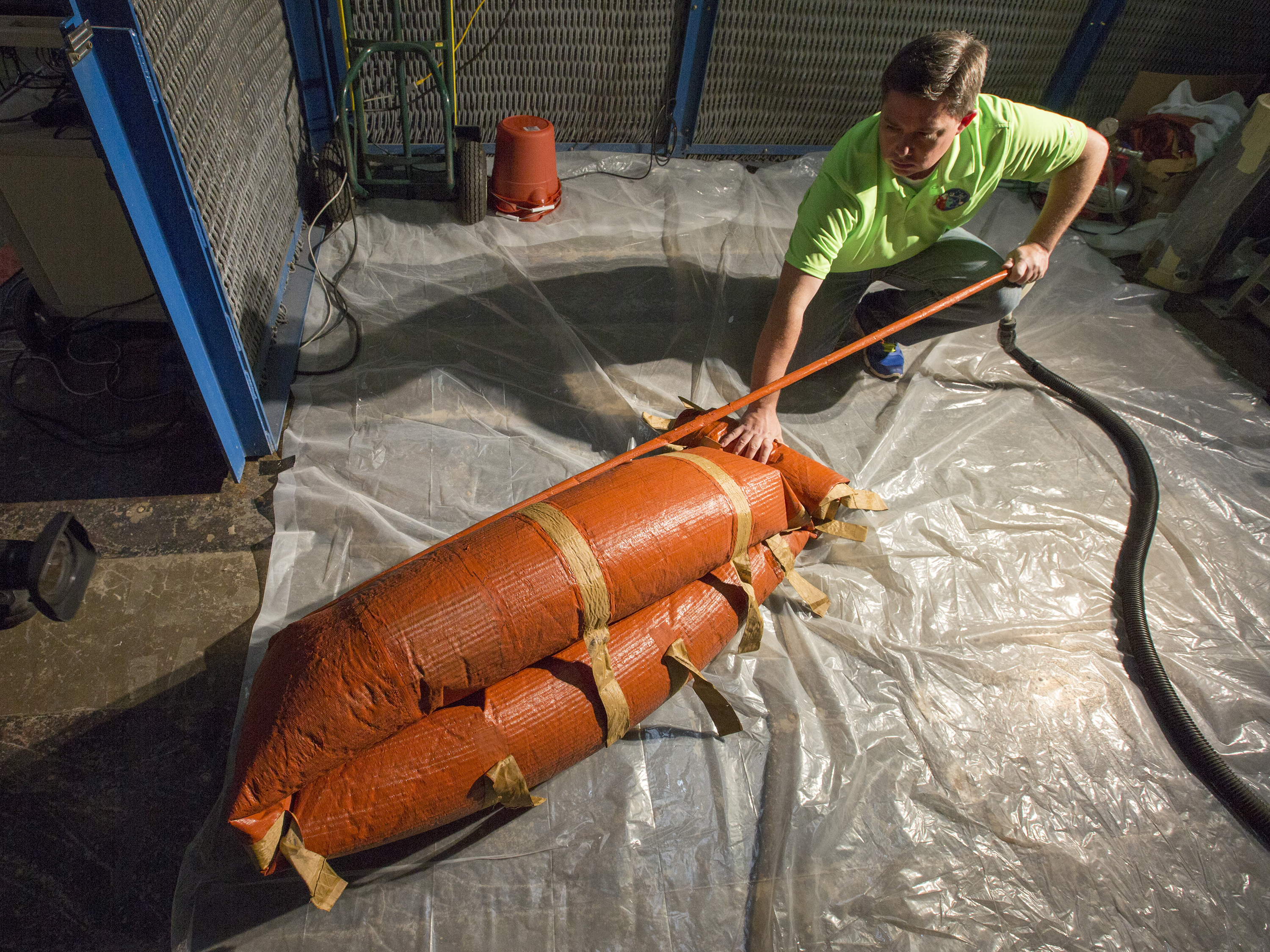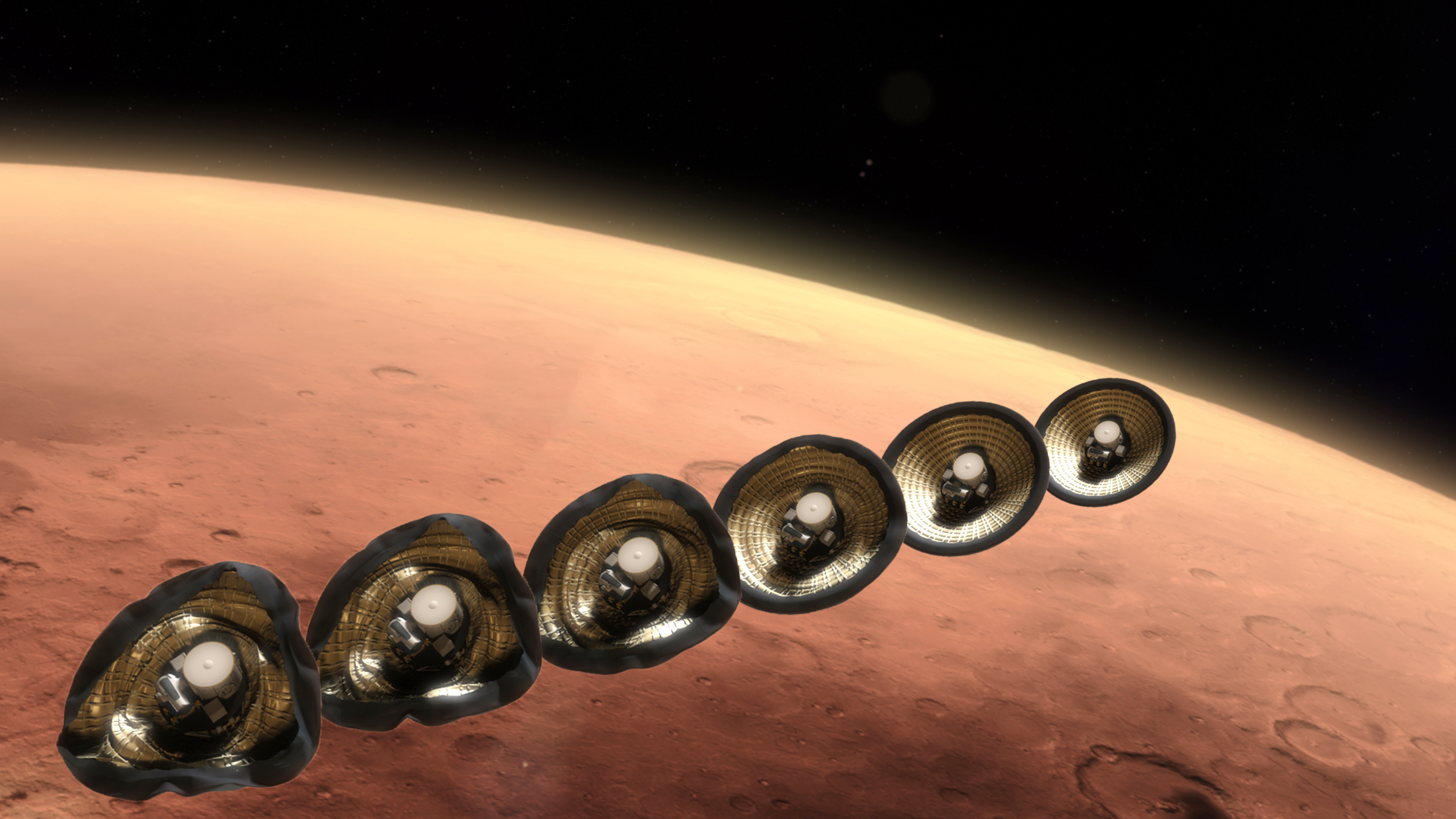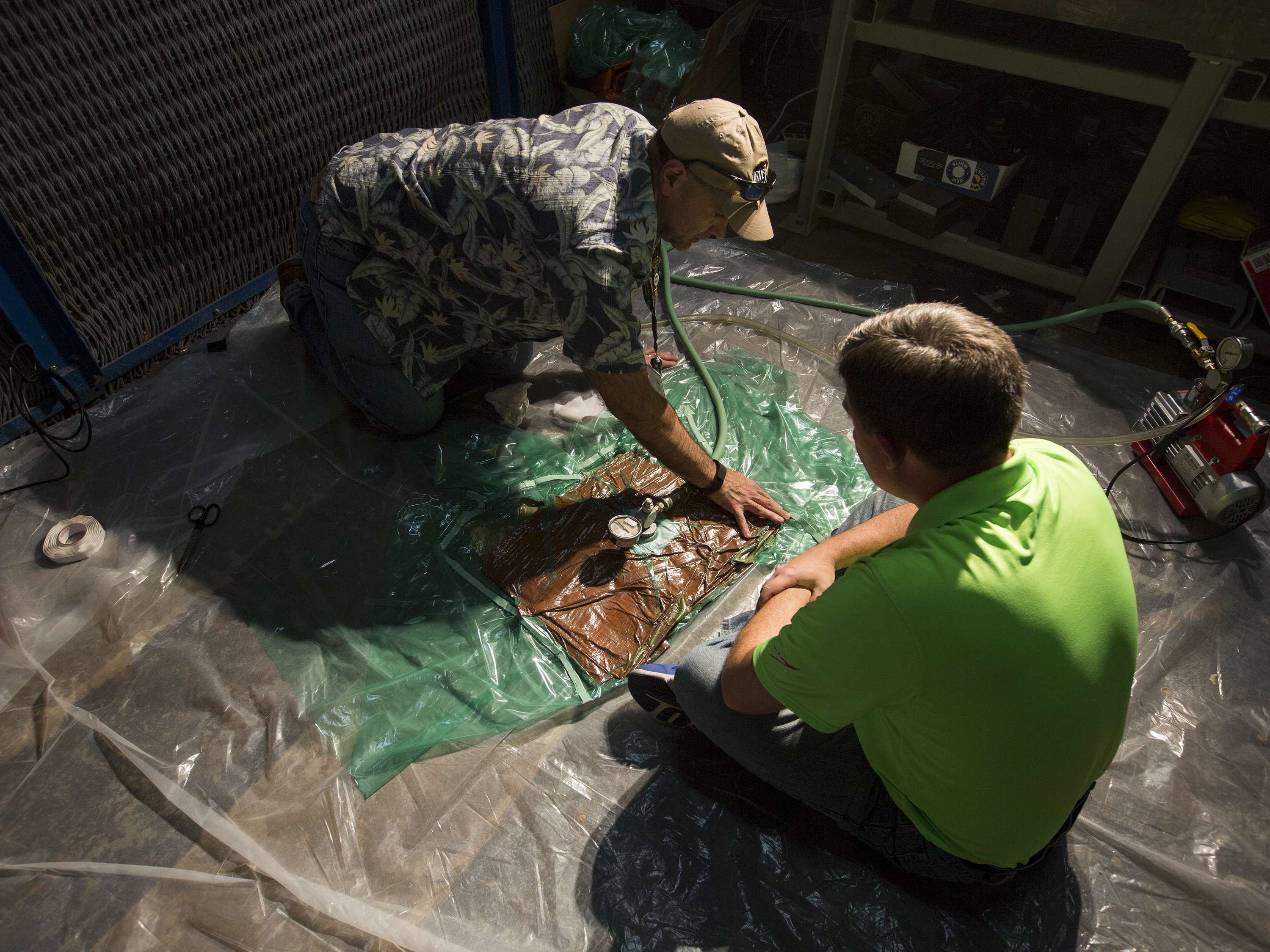NASA's Inflatable Heat Shield Takes Vacuum Packing to a New Level

An inflatable-heat-shield prototype designed to protect spacecraft on other worlds has passed its first key step: making sure it fits into a rocket.
In a recent test, the 9-foot-diameter (3 meters) test shield was carefully compressed to see how it would respond to the folding and packing. By studying the doughnut-shaped heat shield tech, engineers hope to better understand how the material will behave when it automatically deploys during a future deep-space mission.
"During testing, we used a vacuum pump to compress the test article into a small space," lead project engineer Keith Johnson said in a statement from NASA. "We packed and unpacked it and did thorough inspections to check for leaks and damage to the Zylon and Teflon materials. We repeated this three times." [Watch: Inflatable Heat Shields Could Drop-Ship Bigger Robots]
The eventual goal for the inflatable technology, called the Hypersonic Inflatable Aerodynamic Decelerator (HIAD), is to use atmospheric drag to slow down a spacecraft. This will lessen the heat the spacecraft experiences while entering a planet's atmosphere, and will help the spacecraft land more gently, according to a NASA description.

This technology could help people (in a heavy spacecraft) land using the thin atmosphere of Mars, or even return cargo from the International Space Station, NASA HIAD project officials said in the statement. One key barrier to a human Mars mission is how to land the heavy cargo required to support a crew of astronauts for weeks or months.
If this test and others are successful, NASA will build a larger HIAD that can pack into a rocket and deploy safely to bring a spacecraft safely to the ground.

"All these tests build on each other to help demonstrate the performance of the system," Johnson said in the statement. "In the end, we'll have a complete system that will be tested, to show that it can meet the requirements for a spaceflight mission, whether it's going to be returning a vehicle to Earth or future Mars missions."
Get the Space.com Newsletter
Breaking space news, the latest updates on rocket launches, skywatching events and more!
Follow Elizabeth Howell @howellspace, or Space.com @Spacedotcom. We're also on Facebook and Google+. Original article on Space.com.
Join our Space Forums to keep talking space on the latest missions, night sky and more! And if you have a news tip, correction or comment, let us know at: community@space.com.

Elizabeth Howell (she/her), Ph.D., was a staff writer in the spaceflight channel between 2022 and 2024 specializing in Canadian space news. She was contributing writer for Space.com for 10 years from 2012 to 2024. Elizabeth's reporting includes multiple exclusives with the White House, leading world coverage about a lost-and-found space tomato on the International Space Station, witnessing five human spaceflight launches on two continents, flying parabolic, working inside a spacesuit, and participating in a simulated Mars mission. Her latest book, "Why Am I Taller?" (ECW Press, 2022) is co-written with astronaut Dave Williams.









